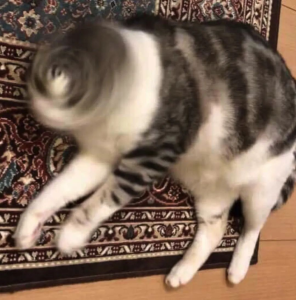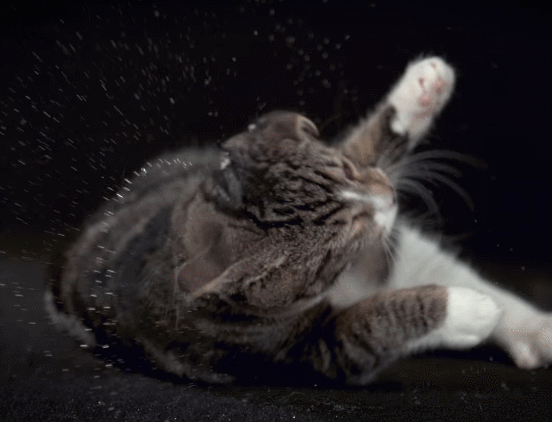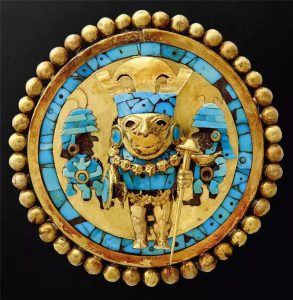Have you ever noticed your cat shaking its head?For instance, after giving your cat a bath or cleaning its ears, you’ll likely witness the lightning-fast head shake—so fast that no human could match it. It’s like a tiny, unstoppable tornado in motion! But here’s a question that might cross the mind of many cat owners: How is it that cats can shake their heads like this without getting dizzy? How do they manage to shake their heads without losing balance or getting disoriented?
-
Why Do Cats Shake Their Heads Without Getting Dizzy?
Cats’ head-shaking can be summarized as follows: they quickly move their head in one direction along the long axis of their spine or body, and then rapidly reverse direction. This head-shaking is important for several reasons, including clearing foreign objects from their ears and preventing heat loss (since water evaporation after getting wet can draw away body heat). But how is it that cats can maintain balance while performing such high-speed rotations?① Smaller Brain Size.Cats have smaller brains compared to larger animals, which helps them shake their heads at high speeds without experiencing dizziness. Typically, dizziness is caused by the brain being subjected to rotational forces when the head shakes, and when the head reverses direction, the brain and skull may collide, leading to disorientation. When comparing brain size across different species, there is a significant difference. Animals with brains weighing more than 1000g, such as humans or larger mammals, will experience stronger collisions between the brain and skull during high-speed head shaking, which can cause dizziness. However, for cats with brains that weigh around 30g, even when shaking their heads up to 9 times per second, this does not cause significant harm. Thus, their smaller brains help ensure they can happily shake their heads without getting dizzy.Does Head-Shaking Speed Affect Balance?② Faster Speed.Research has found that the speed of head rotation varies greatly among animals of different sizes. For instance, larger animals like brown bears require more force to shake their heads and, as a result, don’t shake as quickly. On the other hand, smaller animals like cats don’t need as much force to shake their heads, and since the brain does not collide with the skull in such extreme ways, they can shake their heads at higher speeds. This is why cats seem like little spinning tops when they shake their heads.
-
Cats’ Exceptional Balance
In addition to their smaller brains, another critical factor that allows cats to shake their heads without getting dizzy is their highly developed vestibular system. After quickly shaking their heads, cats can self-regulate thanks to their vestibular system, which helps maintain the balance between the eyes, head, and body.What is the Vestibular System?The vestibular system is responsible for a cat’s sense of balance and spatial orientation. Located in the inner ear, it is connected to the vestibular nerve. Not only does it ensure that cats maintain clear vision while turning, but it also helps them remain standing even after shaking their heads. If the vestibular system is damaged or diseased, a cat’s balance and coordination can be significantly affected, leading to symptoms like dizziness or a drunk-like staggering. When the vestibular system detects the head’s motion, it sends signals to the muscles on the opposite side of the body to help adapt to the new position, thus preventing the cat from losing balance after shaking its head.

-
What to Do if Your Cat Shows Signs of Dizziness
Thanks to their small brains and strong balance, cats typically don’t stumble or fall when shaking their heads in everyday situations. However, under certain conditions, cats can show signs of dizziness.① After Intense Play.After fast-paced play, such as chasing a laser pointer or spinning too quickly, your cat may seem disoriented or unsteady, as if they can’t find their balance. This dizziness usually lasts for about a minute and typically only occurs in specific scenarios, like intense play or fast spinning. This kind of dizziness is generally nothing to worry about. However, if your cat experiences unexplained stumbling or falls without any obvious cause, you should take them to a vet for a check-up.② Health Issues that Could Lead to Dizziness.Several health conditions could lead to dizziness in cats.Vestibular System Disease.The most common symptom of vestibular system disease in cats is dizziness. Cats may exhibit signs like falling over, head tilting, difficulty jumping, nystagmus (rapid eye movement), loud meowing without moving, and walking with uncoordinated limbs (ataxia). If the underlying cause can be identified and treated, the symptoms may improve. However, if the vestibular system suffers irreversible damage, head tilting or occasional loss of balance may persist despite treatment.Cerebellar Hypoplasia.When a pregnant mother cat is infected with feline panleukopenia virus, or if the kittens suffer from nutritional deficiencies or head trauma during their development, they may develop cerebellar hypoplasia. This condition has no treatment but is non-contagious and pain-free for the cat. Over time, the kittens can adapt to their condition and find their way of life.Stroke.Cats that suffer a stroke can exhibit symptoms similar to those of vestibular disease. These include vomiting, vision loss, staggering, loss of balance, head tilting, or turning, and loss of control over their limbs. Stroke risk factors include head trauma, heart disease, diabetes, liver disease, and poisoning. Generally, cats with mild symptoms and no other major health issues are more likely to recover.Ear Infections.Middle or inner ear infections can cause dizziness in cats. Symptoms include increased ear discharge (usually thick, purulent, or blood-stained), red or inflamed ear canals, pain when touching the ears, head tilting, uncoordinated walking, and nystagmus. Other causes of dizziness may include anemia, hypoglycemia, and cardiovascular or respiratory diseases.
If your cat shows signs of head tilting, wobbling, or falling over, the first priority is to protect your cat from further injury caused by falling or collisions. No matter how mild the symptoms appear, the best course of action is to seek veterinary care promptly. While cats can generally maintain their balance through self-regulation, intense play and other factors can still lead to dizziness. Therefore, it’s not recommended for cat owners to use a rotating motion with a toy to play with their cats, and of course, spinning the cat’s body for amusement is even more dangerous!Does your cat go wild during playtime? Feel free to leave a comment, share pictures, and let’s exchange tips and stories about raising cats!





